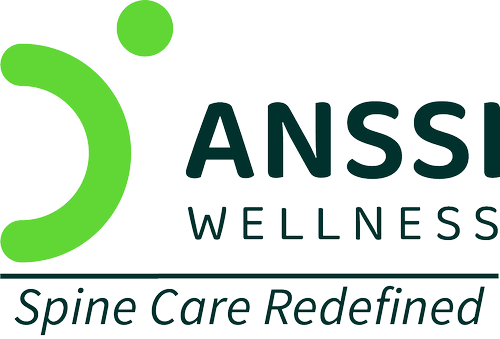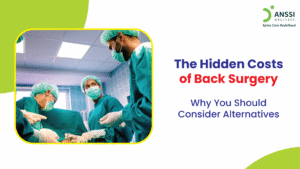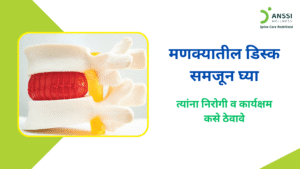The female body undergoes several hormonal shifts throughout life—during puberty, pregnancy, postpartum, and especially menopause. While these changes are a natural part of life, they can significantly affect bone and joint health. Hormones play a crucial role in maintaining skeletal strength and joint flexibility, making it vital for women to understand how these changes can influence their musculoskeletal well-being.
The Role of Hormones in Bone and Joint Health
Among the key hormones that impact bone and joint health, estrogen takes centre stage. Estrogen supports the activity of osteoblasts, the cells responsible for building bone. It also helps regulate calcium absorption and collagen production, which are essential for both bone strength and joint function.
As long as estrogen levels are stable, bones continue to remodel and rebuild efficiently. Additionally, estrogen helps maintain synovial fluid in the joints, which acts as a lubricant and shock absorber, keeping joints supple and reducing friction during movement.
However, when hormone levels fluctuate, particularly during perimenopause and menopause, this delicate balance is disrupted. Reduced estrogen leads to bone resorption, where the body breaks down bone faster than it can rebuild it. Collagen loss, too, means joints become less elastic and more prone to stiffness and discomfort.
Common Effects of Hormonal Changes on Bone and Joint Health
Hormonal changes, especially those related to lower estrogen levels, can lead to several noticeable and often debilitating effects on a woman’s bones and joints.
Bone Loss and Osteoporosis Risk
Post-menopausal women are at a higher risk for osteoporosis, a condition where bones become brittle and porous. This is largely due to the rapid decline in estrogen, which plays a vital role in maintaining bone density. Without adequate hormonal support, the bones lose their mineral content, making them fragile and more susceptible to fractures, even from minor falls or bumps.
Joint Pain, Stiffness, and Inflammation
Many women report joint aches and stiffness during perimenopause and menopause. This discomfort is often most noticeable in the knees, hips, hands, and shoulders. Hormonal shifts contribute to reduced synovial fluid and increased joint inflammation, which together lead to limited mobility and increased pain during everyday movements.
Increased Risk of Fractures and Arthritis
Lower bone density and chronic joint stress raise the risk of fractures and degenerative conditions like osteoarthritis. Additionally, hormonal imbalances may also influence autoimmune responses, potentially triggering conditions like rheumatoid arthritis, particularly during menopause when estrogen and progesterone levels drop significantly.
Preventive Measures to Protect Bone and Joint Health
While hormonal changes are inevitable, the impact they have on your musculoskeletal system can be managed and often reduced through a combination of healthy lifestyle choices and regular monitoring. Here are some preventive strategies every woman should consider:
1. Balanced Diet Rich in Calcium and Vitamin D
Calcium is the building block of strong bones, and vitamin D helps the body absorb calcium effectively. Women should aim to include dairy products, leafy greens, almonds, sesame seeds, tofu, and fortified foods in their diet. Regular exposure to sunlight or a vitamin D supplement may be necessary, especially in areas with limited sunlight.
Other nutrients like magnesium, vitamin K2, and omega-3 fatty acids also support bone and joint health by enhancing mineral absorption, reducing inflammation, and preserving cartilage.
2. Regular Weight-Bearing and Strength-Building Exercises
Exercise plays a crucial role in keeping bones strong and joints flexible.
- Weight-bearing exercises like walking, dancing, and stair climbing help stimulate bone formation.
- Strength training, even using light weights or resistance bands, enhances muscle support around joints, improving stability and reducing injury risk.
- Yoga and stretching routines can further enhance flexibility and range of motion for joints, while also promoting stress relief.
3. Hormonal Health Monitoring
Regular check-ups, including bone density scans (DEXA scans) and blood tests for estrogen and other hormone levels, are important; especially for women over 40. Early detection of bone loss or hormonal imbalance allows timely intervention through dietary adjustments, supplements, or medical guidance.
In some cases, doctors may recommend Hormone Replacement Therapy (HRT) to manage severe symptoms and protect bone density. However, this should always be discussed thoroughly with a doctor, as HRT is not suitable for everyone.
4. Stress Management
Chronic stress can worsen hormonal imbalance, increasing cortisol levels—which, over time, may reduce bone density and contribute to inflammation. Incorporating mindfulness, meditation, breathing exercises, or creative hobbies can support emotional balance and indirectly benefit hormonal health.
Sleep also plays a critical role. Poor sleep disrupts hormonal regulation, so maintaining a consistent sleep schedule and creating a calming bedtime routine is essential.
About ANSSI:
ANSSI Wellness focuses on improving the quality of life for patients suffering from spinal issues, aiming to provide relief where other conventional treatments have failed. Through advanced non-surgical spinal decompression treatment, ANSSI is committed to helping patients avoid surgery and recover in a safe, effective, and compassionate environment.
Connect with ANSSI Wellness on LinkedIn, Instagram, and Facebook for expert guidance.



